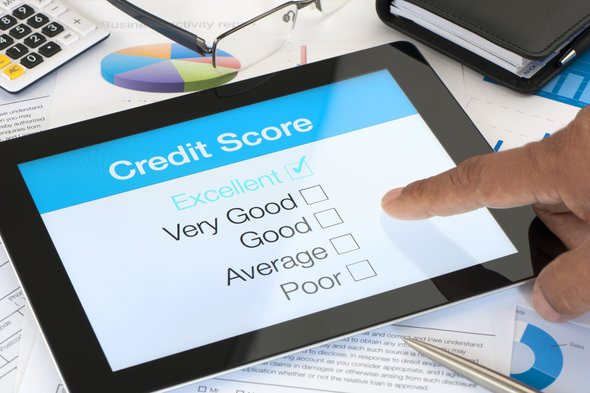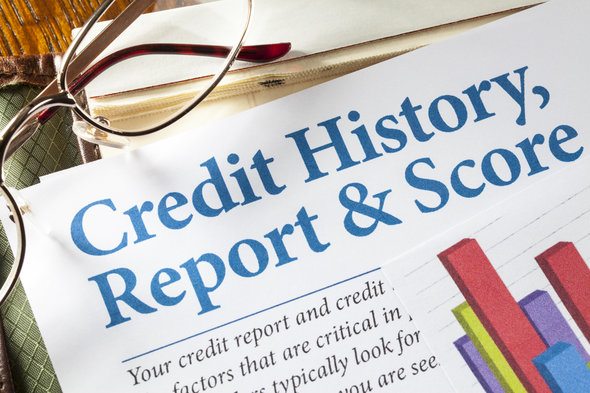Financial experts always tell you to read your credit report. And this is good advice. By studying your report, you can determine whether someone has opened a credit-card account in your name or whether your lender mistakenly says that you missed a car payment when you’ve never paid one even a day late.
Find out now: What credit card is best for me?
But here’s the challenge. Your credit reports can be a bit confusing. How do you accurately read your reports? And what should you look for?
First step: Order your credit report
Before you can study your credit report, you must order them. And, yes, we did write “them.”
Three national credit bureaus all have their own reports on you: TransUnion, Equifax and Experian. And each of these reports can be slightly different, so it makes sense to study all three of them at least once every year.
The good news is that you can order each of your three credit reports once every year at no charge. Just visit AnnualCreditReport.com to order your three reports, either all at once or staggered over several months.
Personal information
Your credit reports will start with personal information, including your name, date of birth, current address, prevous addresses, Social Security number and your employment information. This last bit is interesting, though: Not every employer will report your status to the credit bureaus. So don’t be surprised if a current or former job isn’t listed.
Look over this information for errors. If you find any, notify the offending credit bureau in writing with the correct information.
Public records

Public records is another important part of your report, one that lists all the financial disasters that can dramatically lower your credit score.
This includes foreclosures, bankruptcies and court judgments. The section includes information on when the judgment was filed against you. If you are looking at a credit report from TransUnion, you’ll also see a date on which specific negative judgments will fall off your credit report. This will vary. Foreclosures, for instance, will drop off your credit report after seven years, while a bankruptcy might remain on it for 10 years.
Again, make sure the information in this section is accurate. If it’s not, correct it. Foreclosures and bankruptcies can drop your three-digit credit score by more than 100 points.
Adverse accounts
It’s important, too, to carefully examine the information in the section of your credit report labeled “adverse accounts.” This lists credit accounts — such as a credit card — on which you have either missed a payment or been late on a payment. A negative notice will remain on your credit report for seven years before falling off.
This section will also list the balance on any of these adverse credit accounts. For instance, you might owe $500 on a credit-card statement, one that you’ve paid late two times in the last year. Your credit report will list this information.
Related Article: 5 Ways to Repair Your Credit
You might find an item in this section that is listed as “suppressed.” This means that only you can see this information until the credit bureau receives specific information from the holder of the credit line. In such cases, the credit bureau has usually asked for a piece of information from the creditor that it has not yet received.
Accounts in good standing
You want all of your lines of credit to be listed in the “Accounts in good standing” section of your credit report. Quite simply, these are the credit accounts that you have paid on time during a specific period, usually the last 53 months.
You’ll still want to take a good look at this section of your credit report, though. Be on the hunt for accounts that you don’t remember opening. A scammer might have opened an account in your name.
This section of your report will also list how much you owe on all of these accounts in good standing. Be aware that having too much credit-card and other forms of debt could harm your credit score.
Credit history requests

Every time a creditor requests to see your credit report, it will show up in the “Credit history requests” section of your credit report. Maybe you’ve applied for a mortgage loan. Your lender will request your credit reports, and this action will show up here. Same if you’re applying for an auto loan.
You might see, too, that an employer ran your credit after you applied to work with them. If you’re looking for a new apartment, your potential landlord might have run your credit, too.
Every creditor that requests your credit is required to list a reason why. You’ll see this reason listed next to the credit request on your report.
Related Article: 5 Things You Need to Do When Your Identity’s Been Stolen
Reporting errors
Studying your credit report is just one step. You must also correct any incorrect information that you find. If you don’t, errors could cause your credit score to tumble, making it more difficult to qualify for a mortgage loan, take out an auto loan, rent an apartment or even land your dream job.
Unfortunately, it will take time to do this. You’ll have to contact each bureau individually. Experian only handles disputes online, while you can call Equifax at 866-238-8067 or TransUnion at 800-916-8800. Equifax also handles disputes online here, while TransUnion also handles credit disputes online here.
Photo credit: ©iStock.com/Dutko, ©iStock.com/courtneyk, ©iStock.com/Bill Oxford
